We went on another amazing hike today to get to our experiment area.
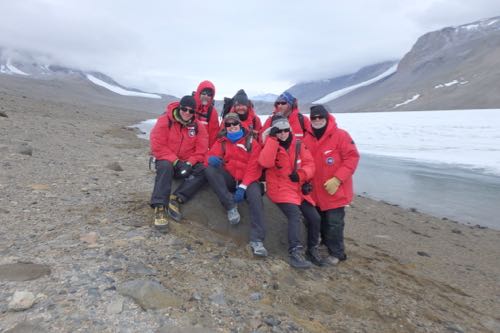 The Wondrous Wormherders pausing for a picture while on our hike to the Worm Farms.
The Wondrous Wormherders pausing for a picture while on our hike to the Worm Farms.
The area is named the Worm Farms. It is where Wormherder Creek empties into Bonney Lake. We hiked about for a couple of hours today to conduct our science. We needed to cross the Bonney Regal. If you look up the word "regal", you will see it described as "majestic", "magnificent", "spectacular", "awe-inspiring", and "breathtaking". The Bonney Regal is that for sure, but speaking in geologic terms, a regal is a tough section of a mountain that is what is left standing when the other sediments have been removed, in this case, by wind, and the Taylor Glacier.
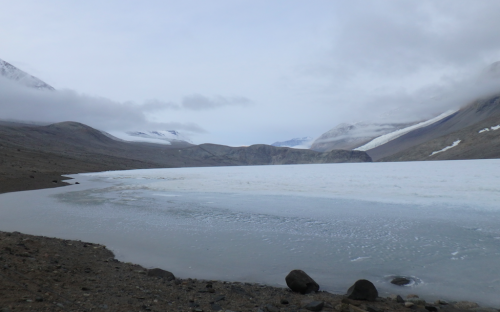 This is Bonney Lake looking up towards the Taylor Glacier. We hiked up and over the Bonney Regal, which you can see just on the other side of the lake, to access our stoichiometry experiment location site.
This is Bonney Lake looking up towards the Taylor Glacier. We hiked up and over the Bonney Regal, which you can see just on the other side of the lake, to access our stoichiometry experiment location site.
You can find it on a map because it is at the base of Taylor Glacier.
The experiment we did today is called the stoichiometry experiment. We add nutrients to the soil and watch to see how the animals here (nematode worms) respond. Nitrogen, phosphorous, carbon, and mixtures of each were added.
We also check another on-going experiment in the area where plastic cones were anchored to the ground which acts like little greenhouses. Scientists here have been watching this experiment for years monitoring what effect an increase in soil temperature has on the soil ecosystem.
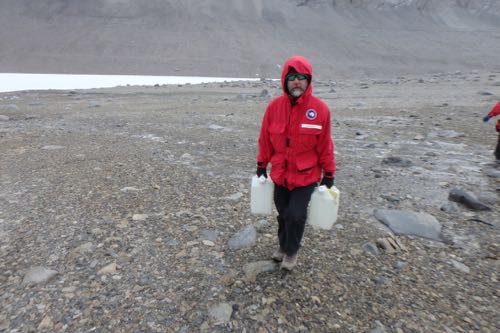 Dr. Jeb Barratt hauling 2 of the 30 jugs of water from the helicopter LZ to the site of our experiment.
Dr. Jeb Barratt hauling 2 of the 30 jugs of water from the helicopter LZ to the site of our experiment.
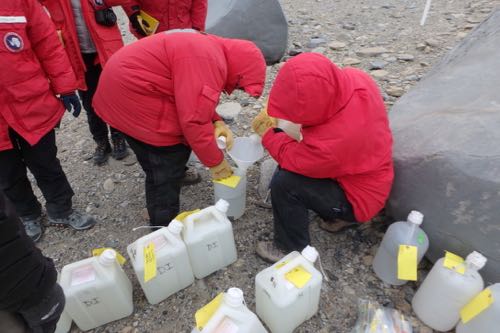 Water with added nutrients are being poured into sprinkling containers that will be poured onto the selected areas of the plot.
Water with added nutrients are being poured into sprinkling containers that will be poured onto the selected areas of the plot.
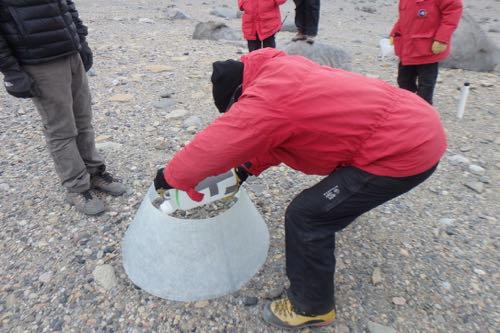 Dr. Byron Adams applying nitrogen rich solution to the sample plot. The solution is evenly sprinkled on the ground inside these cones.
Dr. Byron Adams applying nitrogen rich solution to the sample plot. The solution is evenly sprinkled on the ground inside these cones.
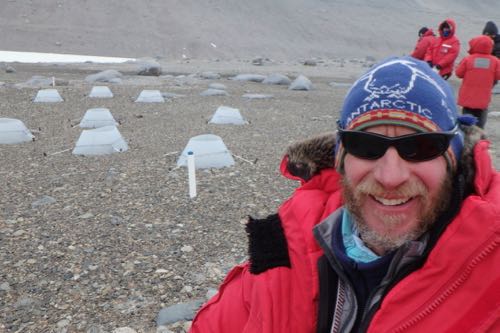 The experiment going on in this plot is the warming and water experiment. Those white things you see in the background are like little greenhouses. They are secured to the ground with cables in order for them to not blow away in the harsh Antarctic winds.
The experiment going on in this plot is the warming and water experiment. Those white things you see in the background are like little greenhouses. They are secured to the ground with cables in order for them to not blow away in the harsh Antarctic winds.
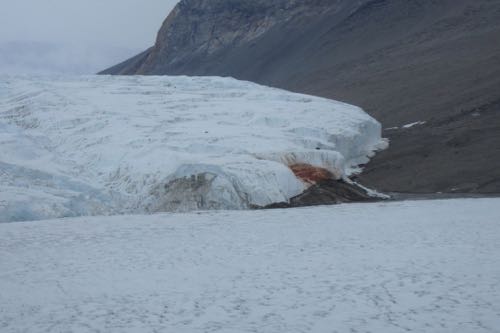 The Worm Farms, where we did our experiments today, was near the base of this glacier. It is the huge Taylor Glacier. This valley is named for this glacier. Look closely at the end of the glacier and you will see red coming out of it. This wonder of nature is called Blood Falls.
The Worm Farms, where we did our experiments today, was near the base of this glacier. It is the huge Taylor Glacier. This valley is named for this glacier. Look closely at the end of the glacier and you will see red coming out of it. This wonder of nature is called Blood Falls.
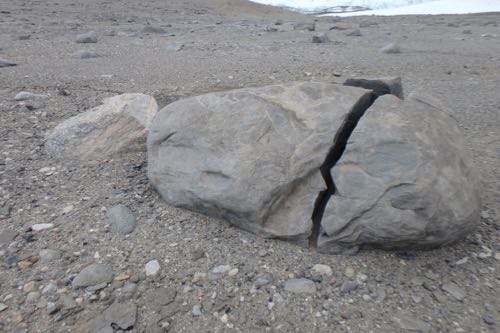 This boulder (the size of a small car) knows all about frost action. Water gets into cracks of rocks, expands when freezes, and cracks rocks.
This boulder (the size of a small car) knows all about frost action. Water gets into cracks of rocks, expands when freezes, and cracks rocks.
Here are three photos from our walk home after our experiment work was done. Check it out. Can you figure out what it is? The answer is at the bottom of this journal.
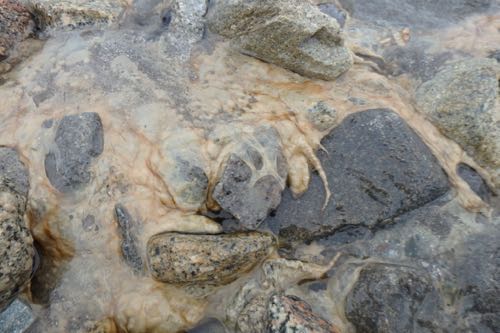 Mystery Photo 1.
Mystery Photo 1.
 Mystery Photo 2.
Mystery Photo 2.
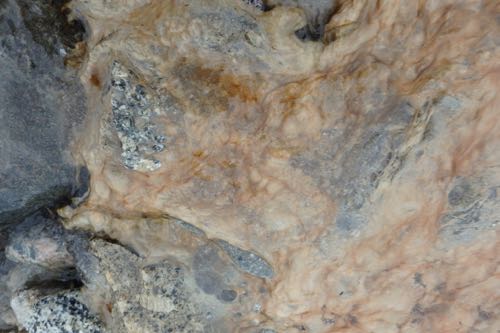 Mystery Photo 3.
Mystery Photo 3.
Here is a fun video where Dr. Tom "Topper" Powers demonstrates how to prepare the sprinkling bottles which will be poured onto the sampled plots. He also shares his techniques he uses to prevent hypothermia.
Answer to Mystery Photos: These are pictures of cyanobacteria in a stream coming out of a glacier which is feeding into Lake Bonney. These are prokaryotic (without a nucleus) celled organisms. It is bacteria that uses the sun for it's energy (photosynthetic). These are the same types of organisms that were being studied on the bottom of the Lake Bonney.


Add new comment